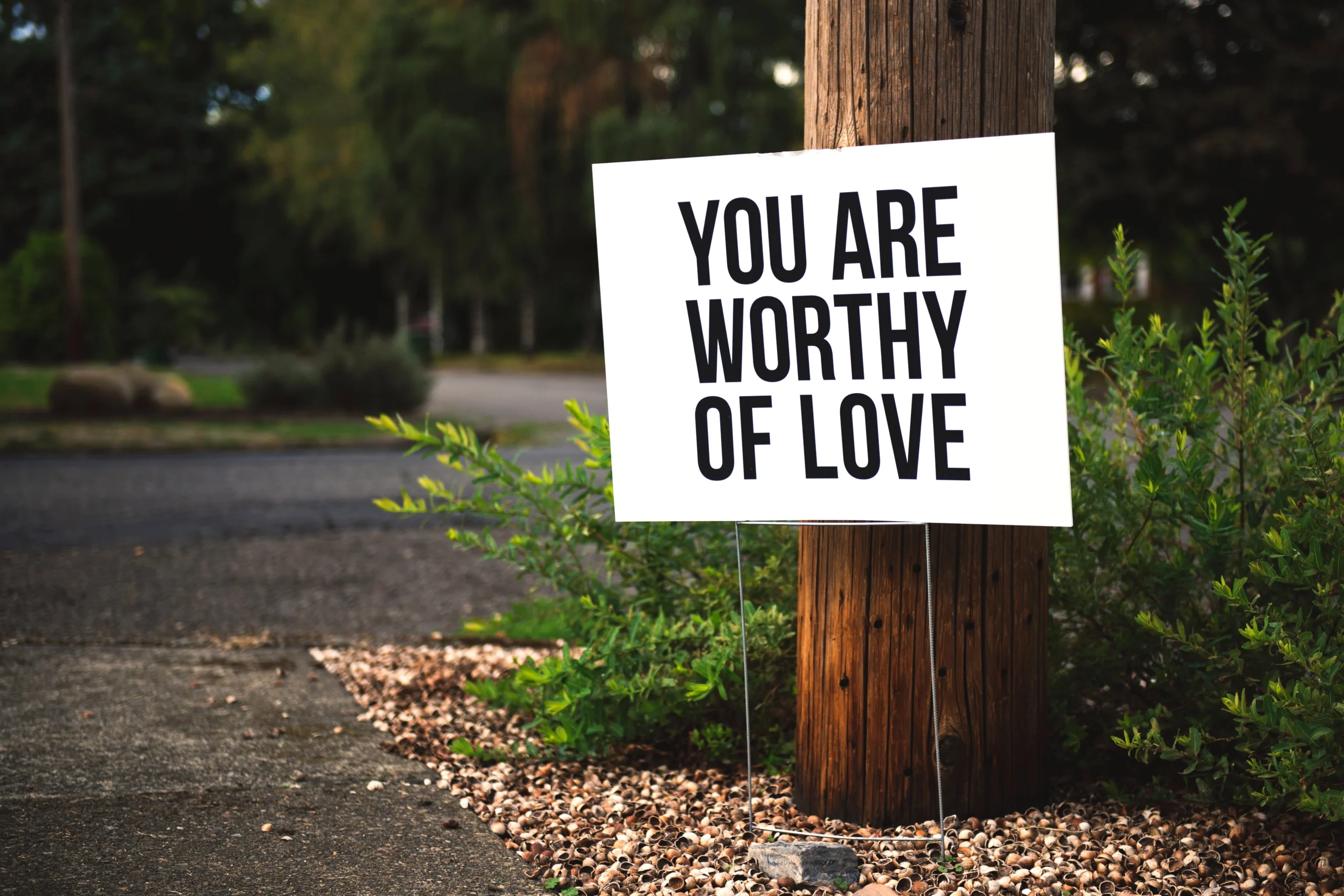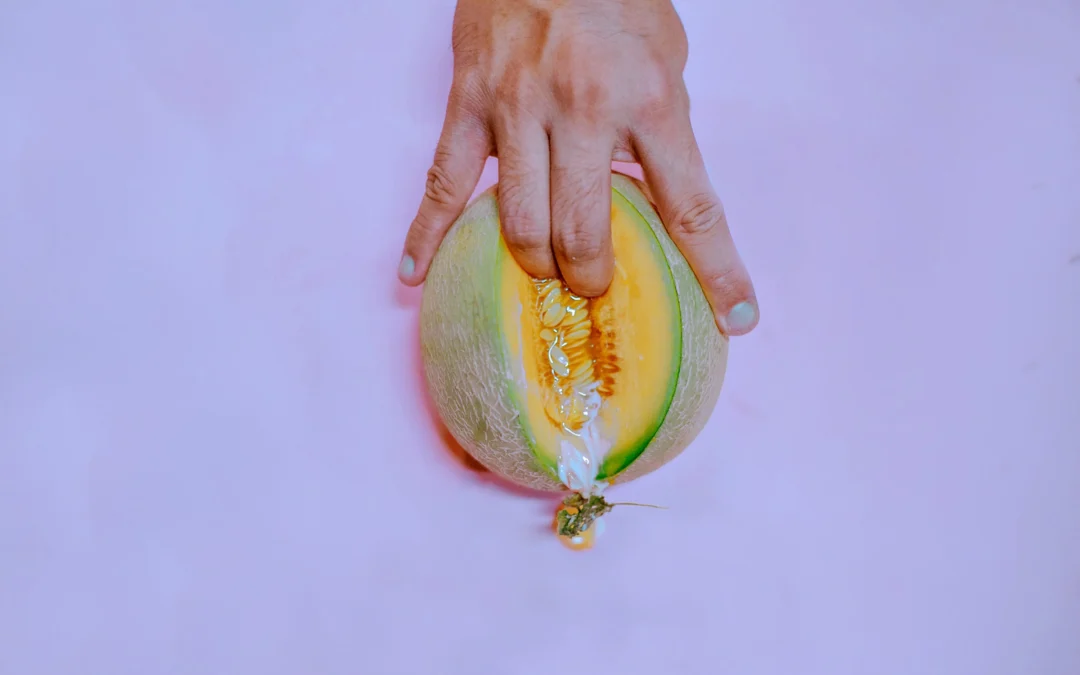According to researchers and Mindful Self-Compassion Program creators Kristin Neff and Christopher Germer, self-compassion is made up of three central conflicts. The Self-Compassion Break Exercise detailed below is a concise and powerful tool for engaging with those conflicts in our own lives, for actively accessing our self-compassion and creating a brief but intentional space for our own healing and growth. If you’ve been to this page before or practiced this exercise in the past, have no fear, the recordings you are looking for are right here.
Audio Only-
Text Form of the Self-Compassion Break-
Think of a situation in your life that is difficult, that is causing you stress. Call the situation to mind, and see if you can actually feel the stress and emotional discomfort in your body.
Now, say to yourself:
1. This is a moment of suffering
That’s mindfulness. Other options include:
-
This hurts.
-
Ouch.
-
This is stress.
2. Suffering is a part of life
That’s common humanity. Other options include:
-
Other people feel this way.
-
I’m not alone.
-
We all struggle in our lives.
Now, put your hands over your heart, feel the warmth of your hands and the gentle touch of your hands on your chest. Or adopt the soothing touch you discovered felt right for you.
Say to yourself:
3. May I be kind to myself
You can also ask yourself, “What do I need to hear right now to express kindness to myself?” Is there a phrase that speaks to you in your particular situation, such as:
-
May I give myself the compassion that I need
-
May I learn to accept myself as I am
-
May I forgive myself
-
May I be strong.
-
May I be patient
This practice can be used any time of day or night, and will help you remember to evoke the three aspects of self-compassion when you need it most.
If you are new to the study of mindful self-compassion or are seeking to refresh or re-explore your practice with a beginners mind, what follows is an overview of the exercise breaking down the essential elements, a collection of tips, tricks and best practices and a summary of the research supporting these strategies.
Self-compassion is in essence a willingness to offer nourishment or support to our areas of need, to be with the pain as it’s roots roughly translate. The support that we offer comes in the form of presence, connection to our common humanity and loving kindness. This exercise is about accessing those sensations for ourself through a series of mantras, each helping us navigate one of the three essential conflicts. It’s simple nature creates a great starting point for exploring self-compassion, for becoming aware of the sensation of self-compassion within the body and for familiarizing yourself with it’s three basic components.
As a therapist I often encourage clients to commit to practicing the exercise twice a day for a period of atleast two weeks. My own experience and personal advice would suggest that you begin each day by practicing along with one of these guided recordings. Then commit daily to identifying an area of suffering, small in significance to start, where you can practice the individual steps and mantras within your own mind. I did this by carrying a pebble in my left pocket every morning- this served as a constant reminder of my commitment to identify a moment of suffering and created a sense of satisfaction when, having done the exercise while stuck in traffic or upon learning I was out of ice cream, I moved the pebble to my right pocket. Contrary to expectation, the reminder to be constantly looking for suffering created not a pessimistic worldview but an excited opportunity to deploy self-compassion in every day life.
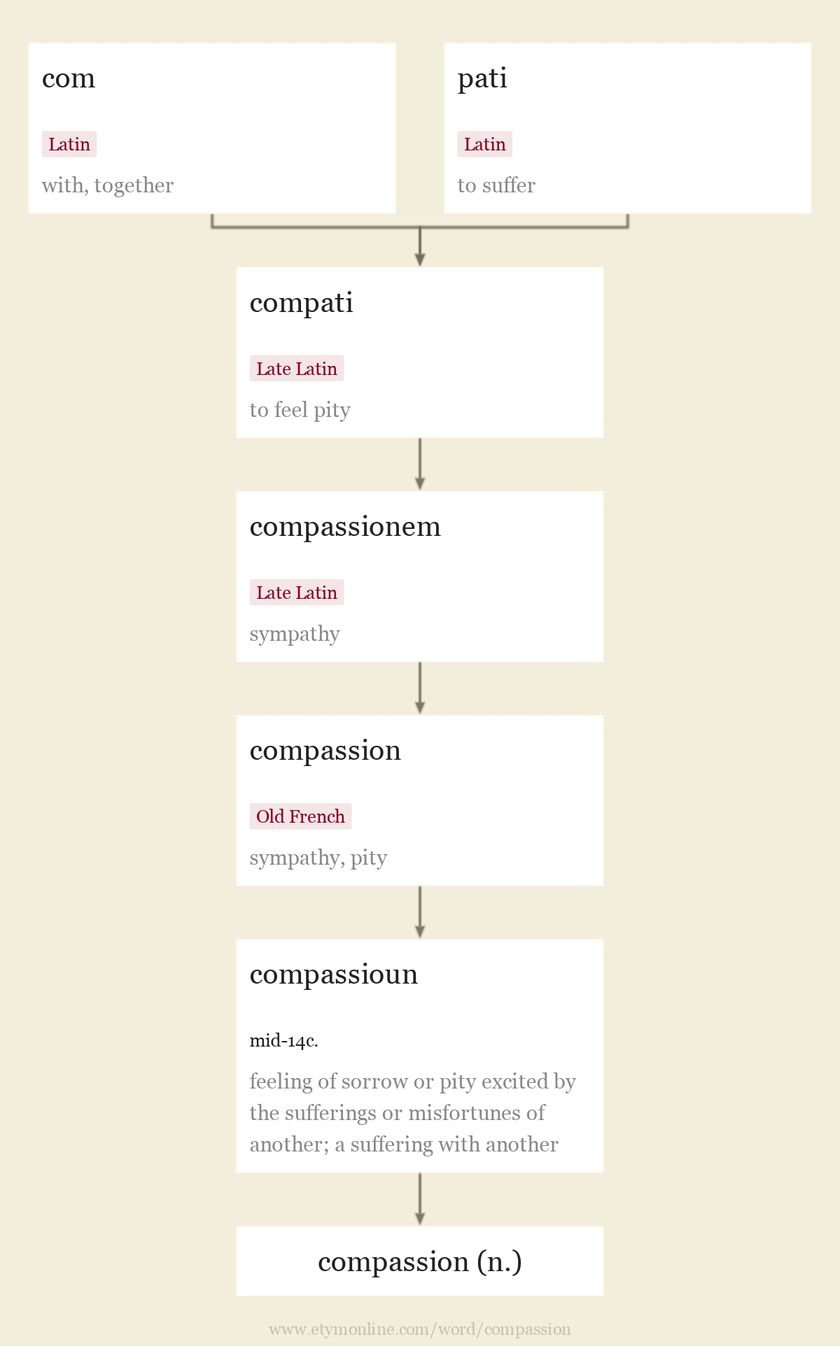
We begin the excercise by arriving, settling into a moment of contemplation, whether through serious meditation or by simply agreeing to spend a few moments offering ourself the compassion we need. First we bring to mind an area of suffering. In our practice we may want to start with something small and relatively inert- the time we got stuck in traffic or stubbed our toe, even the time our favorite show turned out not to have a new episode this week. As we practice we’ll want to not only offer ourself compassion in areas of greater pain but to also have it handy as a resource for our real life moments of distress, great and small.
The first conflict to navigate is moving from a place of avoidance or unawareness to mindfulness. Mindfulness itself could be said to consist of presence (awareness) and acceptance (non-resistance/ non-judgement). You can find an introductory practice to increase mindfulness here. In this exercise we begin the journey of accepting what is (i.e. frankly and accurately seeing the place our compassion needs to go) by bringing an area of suffering to mind and then labeling that feeling for what it is. Example mantras might be-
-
This is a moment of suffering
-
Ouch
-
This hurts
-
I’m in pain
-
This sucks
-
I hate this
-
This is difficult
-
I’m experiencing a challenge
Chose whichever phrase suits you most or write your own, and be comfortable changing or adjusting on a whim. There may be some comfort that comes from using the same phrase each time, though continued use may lead to fatigue. Once the words feel like they’ve lost their meaning or no longer conjure strong sensation, consider a new approach. A final word on the word suffering- I think there is incredible value in recognizing all challenges, big or small, as suffering. Many people feel that word caries with it an existential weight that makes it more appropriate for starving children or political detainees then for stubbed toes or cars stuck in traffic. And while yes, we should be mindful of our privilege even as we consider our pain, recognizing the connection between a papercut and a battle wound may empower us to stop dismissing our own needs and to connect with our common humanity.
The next part of the process is to intentionally connect with a sense of common humanity and leaving behind feelings of isolation and lonliness. We reframe our personal struggles not as a sign that we are weak, insufficient or inherently bad but as part of the human experience. The fact that something is hard for you doesn’t mean that you aren’t good enough to complete it, it’s a sign that the task is hard. It’s important to remember that all creatures suffer and that our pain isn’t necessarily a sign we’re doing the wrong thing but likely indicates we are growing by pushing our own limitations. We achieve this by saying-
-
Suffering is a part of life
-
Pain means I’m alive
-
All creatures suffer
-
This struggle is how I know I’m alive
-
This is a part of real life
-
It’s normal for me to feel this way
-
I am not alone
-
There are people all over the world who feel this way
Finally we complete our practice by offering ourself loving kindness and seeking to move away from a place of judgement. For this exercise we limit our actions to setting our intentions- we offer ourself loving kindness by expressing care or an intention to maintain a positive and loving frame of reference for ourself. It’s important here not to use magical thinking or become attached to a specific outcome. This practice isn’t about fixing a problem or making the issue go away, it’s about offering ourself the nurturance and support we need to deal with it. Rather then “May my boss quit” or “May this problem go away” say:
-
May I feel safe
-
May I be free from harm
-
May I live happily and at ease
-
I maintain peace and joy despite this struggle
-
I invite kindness for myself in this moment
-
It’s okay that this isn’t fair.
-
I can be okay when things suck.
-
I hope things get better.
-
I have my own back.
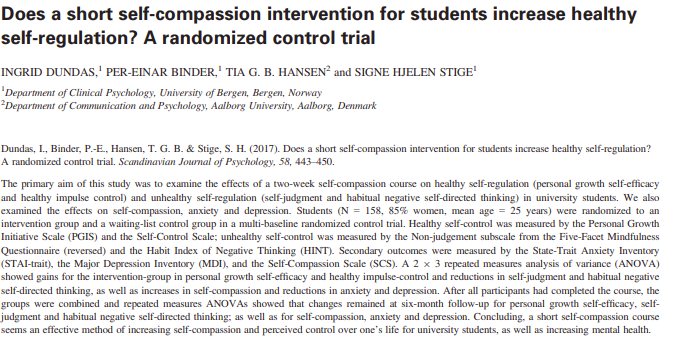
Though no single exercise or program can magically make our problems go away, a growing body of research suggests that mindful self-compassion meditation exercises like the Self-Compassion Break can, even after a brief period of 2-3 weeks, have significant impact on our positive affect and wellbeing. What follows is a brief collection of related studies taken from the database maintained by Kristin Neff at Self-Compassion.org .
Albertson, E. R., Neff, K. D., & Dill-Shackleford, K. E. (2014). Self-compassion and body dissatisfaction in women: A randomized controlled trial of a brief meditation intervention. Mindfulness, 6(3), 444–454.
Aurora Hasselberg & Michael Rönnlund | (2020) Cultivating self-kindness and attention to the present moment in the young: A pilot-study of a two-week internetdelivered mindfulness and self-compassion program, Cogent Psychology, 7:1
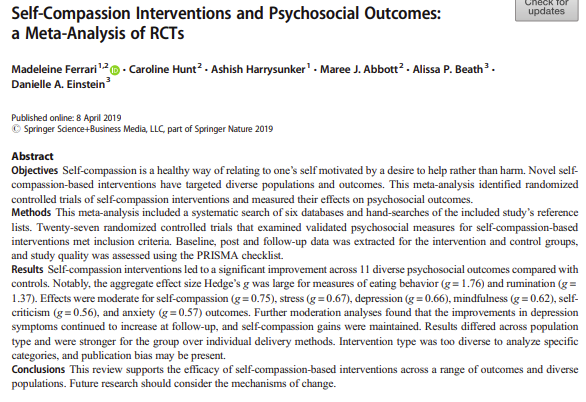
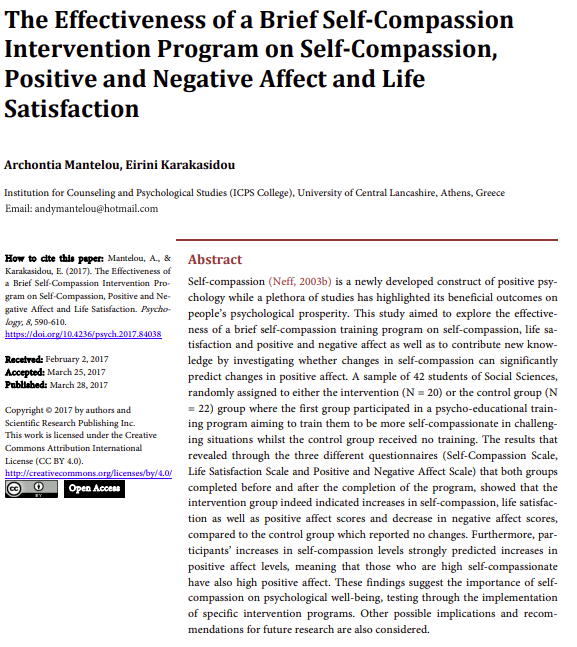
Dundas, I., Binder, P.-E., Hansen, T. G. B. & Stige, S. H. (2017). Does a short self-compassion intervention for students increase healthy self-regulation? A randomized control trial. Scandinavian Journal of Psychology, 58, 443–450.
Ferrari, M., Hunt, C., Harrysunker, A., Abbott, M. J., Beath, A. P., & Einstein, D. A. (2019). Self-compassion interventions and psychosocial outcomes: A meta-analysis of RCTS. Mindfulness, 10(8), 1455–1473.
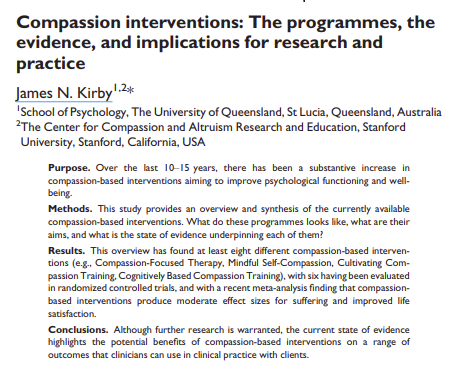
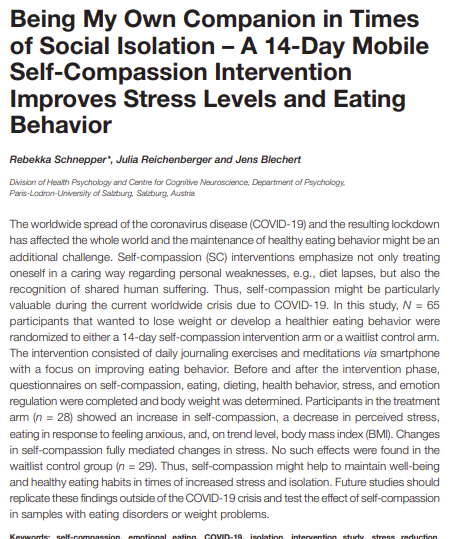

Kirby, J. N. (2016). Compassion interventions: The programmes, the evidence, and implications for research and Practice. Psychology and Psychotherapy: Theory, Research and Practice, 90(3), 432–455.
Li, Y., Hu, Y., Yang, W., & Wang, Y. (2021). Daily interventions and assessments: The effect of online self‐compassion meditation on psychological health. Applied Psychology: Health and Well-Being, 13(4), 906–921
Mantelou, A., & Karakasidou, E. (2017). The Effectiveness of a Brief Self-Compassion Intervention Program on Self-Compassion, Positive and Negative Affect and Life Satisfaction. Psychology, 8, 590-610.
Schnepper R, Reichenberger J and Blechert J (2020) Being My Own Companion in Times of Social Isolation – A 14-Day Mobile Self-Compassion Intervention Improves Stress Levels and Eating Behavior. Front. Psychol. 11:595806

